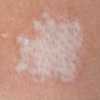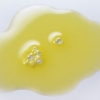Lichen Sclerosus infantile: una sfida per i medici.
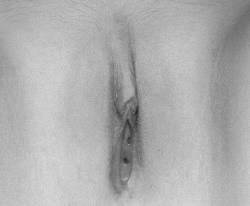 Il lichen sclerosus (LS) infantile è una dermatite rara a decorso imprevedibile, che spesso viene scambiata con la dermatite infiammatoria. Le complicazioni più frequenti di LS sono dei cambiamenti strutturali della vulva; è anche possibile la trasformazione maligna.
Il lichen sclerosus (LS) infantile è una dermatite rara a decorso imprevedibile, che spesso viene scambiata con la dermatite infiammatoria. Le complicazioni più frequenti di LS sono dei cambiamenti strutturali della vulva; è anche possibile la trasformazione maligna.
L'obiettivo del nostro studio è stato quello di definire il contesto e il decorso a lungo termine di LS infantile. Uno studio di registro ha identificato 44 bambini con LS trattati al Tampere University Hospital, di Tampere, in Finlandia, dal 1982 al 2010.
Un questionario è stato spedito ai pazienti identificati e tra questi, 15 hanno risposto. La descrizione clinica di LS è variata in modo significativo. LS è stata diagnosticata solo nel 16% dei pazienti presso l'unità di riferimento. Malattie autoimmuni sono state osservate in 6 pazienti dei 44 totali. Sono state notate alte prevalenze della sindrome di Turner (2/44) e delle malattie renali (2/44). La maggior parte dei pazienti è stata trattata con corticosteroidi topici. Otto casi hanno sviluppato cambiamenti strutturali della vulva.
Il questionario ha rivelato che tre dei sei pazienti, i quali risultavano asintomatici alla fine del periodo di follow-up dello studio di registro, hanno invece sperimentato una ricomparsa dei sintomi: nessuno di loro è stato sottoposto a follow-up.
Nove pazienti su 15 hanno riferito di un basso livello di qualità della vita. L'LS infantile è una malattia eterogenea, con un notevole effetto sulla qualità della vita. La diagnosi errata di LS infantile è comune. L'associazione tra LS e malattie autoimmuni dovrebbe essere nota. L'alta prevalenza della sindrome di Turner solleva molte domande riguardanti l'influenza dei bassi livelli di estrogeni sullo sviluppo di LS.
La prognosi non può essere prevista, pertanto è consigliato un follow-up a lungo termine. Sono necessari nuovi strumenti per la diagnosi e la sorveglianza.
Storia della pubblicazione:
Titolo: Childhood Lichen Sclerosus—A Challenge for Clinicians
Rivista: Pediatric Dermatology. doi: 10.1111/pde.12109
Autori: Maria Lagerstedt, Kaisa Karvinen, Minna Joki-Erkkilä, Riitta Huotari-Orava, Erna Snellman, Satu-Leena Laasanen
Affiliazioni:Department of Pediatrics, Genetics Outpatient Clinic, Tampere University Hospital, Tampere, Finland Faculty of Medicine, Tampere University, Tampere, Finland Paediatric and Adolescent Gynecology Outpatient Clinic, Child Psychiatry Department, Tampere University Hospital, Tampere, Finland Centre for Laboratory Medicine, Tampere University Hospital, Tampere, Finland Department of Dermatology, Päijät-Häme Central Hospital, Lahti, Finland Department of Dermatology, Tampere University Hospital, Tampere, Finland
Abstract:
Childhood lichen sclerosus (LS) is a rare and often misdiagnosed inflammatory dermatitis with an unpredictable course. The complications of LS are architectural changes of the vulva; malignant transformation is possible. The objective of our study was to define the background and the long-term course of childhood LS. A registery study identified 44 children with LS treated at Tampere University Hospital, Tampere, Finland, from 1982 to 2010. A questionnaire was sent to the identified patients and 15 responded. The clinical depiction of LS varied significantly. LS was diagnosed in only 16% of the patients at the referring unit. Autoimmune disorders were observed in 6 of the 44 patients. High prevalences of Turner's syndrome (2/44) and kidney disease (2/44) were noted. The majority of the patients were treated with topical corticosteroids. Eight developed architectural changes of the vulva. The questionnaire revealed that three of six patients who were asymptomatic at the end of the registery study follow-up experienced a recurrence of symptoms. None of them were undergoing follow-up. Nine of the 15 patients reported reduced quality of life. Childhood LS is a heterogeneous disease with a remarkable effect on quality of life. The misdiagnosis of childhood LS is common. The association between LS and autoimmune diseases should be noted. The high prevalence of Turner's syndrome raises questions regarding the influence of low estrogen levels on the development of LS. The prognosis cannot be predicted, so long-term follow-up is recommended. New tools for diagnosis and surveillance are needed.
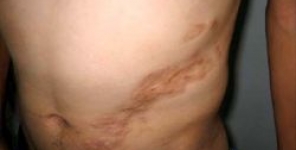
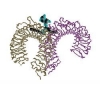
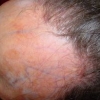
![Eruzioni da farmaco simili al lichen planus, dovute ai [beta]-bloccanti: un caso clinico e revisione della letteratura](/images/articlethumbs/lichen-planus_thumb_small.jpg)
